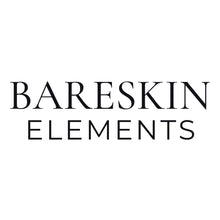Serum A-Glyca targets the glycation reaction (which causes wrinkles and premature skin aging).
To fully comprehend what follows, it is necessary to understand the structure and mechanism of the skin, as described in the dermatological dossier on "the skin." Glycation is one of the primary causes of skin aging. This reaction alters proteins by drastically altering their properties. To produce energy, our bodies require glucose, which is found in sugars. However, the body does not fully utilize glucose. During the glycation process, some molecules form direct bonds with proteins such as collagen and elastin. This reaction produces Advanced Glycation End-Products (AGE), which cause skin aging.
Visible signs of glycation on the skin
The rate of formation of these AGEs is determined by the persistence of excess sugars in the body, which is accelerated by heat, UV rays, pollution, and oxygen. Glycated proteins lose some of their properties, which have an impact on metabolism and cellular functions. Most AGEs accumulate with age in long-lived tissue proteins like collagen, which has a half-life of 10 to 15 years (the time it takes for a molecule to lose half of its physiological activity).
On the skin, visible signs of glycation include:
- loss of elasticity
- loss of tone/firmness
- appearance of wrinkles
- Skin discoloration
Tired and dull looking skin
The body is designed to follow a circadian rhythm (a biological rhythm lasting about 24 hours), which is controlled by melatonin and alternates between periods of activity and sleep during which these repair systems are activated. However, for many active people, the frantic pace of life takes over and causes sleep disorders, preventing these repairs from being completed as effectively as they could be. As a result, fatigue develops into a chronic condition. It leaves its mark on the face: bags and puffiness under the eyes, a dull complexion, and drawn features; waste accumulates in cells and tissues, energy levels drop, and metabolism slows.
Fighting cell fatigue requires reducing the daily effects of glycotoxins (AGEs), particularly by protecting melatonin. Melatonin is a molecule that is produced throughout the body, most notably in the skin. It is involved in the regulation of restorative and protective sleep, as well as the preservation of cells' energy production capacities. Glycotoxins can reduce its rate.
Glycotoxins reduce cells' ability to produce energy and alter molecules. In addition, the effects of glycotoxins accumulate over time; they lead to a decrease in the responsiveness of cells to additional stress as well as a kind of “cell fatigue”.
When a cell (or body) is young, it has high restorative capacities and recovers quickly. Daily fatigue reduces these capacities and tends to amplify the harmful effects of glycotoxins. Reducing daily glycation can limit long-term fatigue symptoms and greatly reduce its accumulation, which makes it appear older.
A loss of radiance, on the other hand, may be caused by skin aging due to: - The thickening of the horny layer due to the accumulation of dead cells, which reduces the transparency of the epidermis
- The epidermis is thinning.
- Keratinocyte activity and renewal slowing
Loss of skin tonicity and firmness
The skin becomes more vulnerable to the ravages of time as we age. Natural signs of aging include pigmentation marks, wrinkles, and bags. Skin, whether on the face or the body, will eventually wrinkle, age, and sag. As a result, sagging skin is an irreversible phenomenon, but it can occur at any age for a variety of reasons. There are various types of skin sagging, including sagging caused by aging.
Sagging skin due to aging occurs around the age of 50 and can be exacerbated by the following factors:
- Menopause: Because of its effect on hormones, menopause dries out the skin and emphasizes sagging.
- Tobacco
- The sun: The sun, a true destroyer, dries out the skin and kills the proteins and acids that keep one looking young.
- The gravitational effect accentuates skin sagging.
As we age, the face becomes wrinkled, loses its volume (cheeks, temples) and starts sagging. Because of this sagging skin, the face loses its normal shape. The phenomenon of glycation accentuates its effects.
Biologique Recherche Solution
The Serum A-Glyca is a truly groundbreaking serum that combats the glycation reaction (which causes wrinkles and premature skin aging). It prevents this phenomenon through substitution but also reverses it through deglycation due to its formula's high concentration of anti-glycation active ingredients (mimosa and carcinine).
Our Glyca serum:
- Acts against the phenomenon of glycation
- Protects proteins within the skin’s structure
- Reduces deep lines and wrinkles
- Reduces signs of tiredness on the face
- Contributes to the skin’s firmness
- Brings radiance to the complexion
It has good anti-glycation activity by inhibiting completely the alteration of the fibrillin.
It is highly recommended for 40 years and above, extremely good for repairing. If customer has clogged pores, it is not advisable to use as it will be too nourishing for the skin.
Take a few drops of the Serum A-Glyca. Onto clean skin, apply the serum morning and night over the entire face, neck and décolleté using gentle ascending movements until the complete absorption of the product.
Hope the above information helps you to determine if Glyca serum works for you.
Have a good day,
Serene from BareSkin Elements

